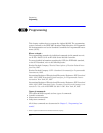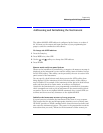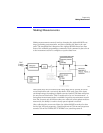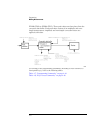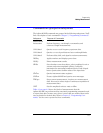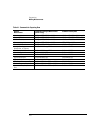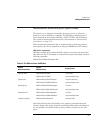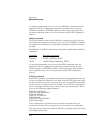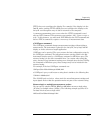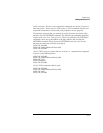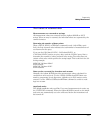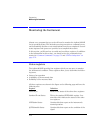
4-10
Programming
Making Measurements
A common programming error is to send the :MEASure command when the
instrument is in the continuous measurement acquisition mode. Because
:MEASure contains an :INIT:IMM command, which expects the single mea-
surement acquisition mode, an error is generated, and the INIT command is
ignored.
:READ command
The READ command works like the MEASure command except that it does
not configure the instrument’s settings. You can use the CONFigure command
to configure the instrument for a particular measurement without returning
any data.
The MEASure and READ commands are identical to combining the following
commands:
Command
Equivalent Commands
:MEASure :ABORt;:CONFigure;:READ
:READ :ABORt;:INITiate:IMMediate;:FETCh
A common programming error is to send the :READ command when the
instrument is in the continuous measurement acquisition mode. Because
:READ contains an :INIT:IMM command, which expects the single measure-
ment acquisition mode, an error is generated, and the INIT command is
ignored.
:FETCh command
The FETCh command returns data from previously performed measurements;
it does not initiate the collection of new data. Because FETCh does not config-
ure the instrument or acquire new input data, you can use FETCh repeatedly
on the same set of acquired data. For example, use two FETCh commands to
return wavelength and then power values for the same measurement. This is
shown in the following program fragment:
OUTPUT 720;”:INIT:CONT OFF;”
OUTPUT 720;”:CONF:ARR:POW MAX”
OUTPUT 720;”:INIT:IMM”
OUTPUT 720;”:FETC:ARR:POW?”
ENTER 720:powers$
OUTPUT 720;”:FETC:ARR:POW:WAV?”
ENTER 720:wavelengths$
In the example above, the data in the power and wavelength arrays are
returned in the same order so that powers can be matched to wavelengths.
Also, because new data is not collected, FETCh is especially useful when char-
acterizing transient data.



